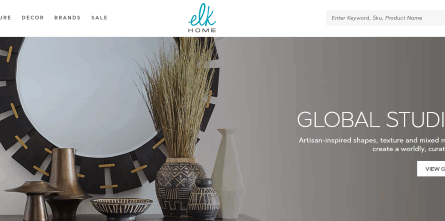Attendance, order-writing activity indicate retailers are eager to fill their floors with goods they want, not desperately need
Heading into any furniture Market, no one really knows what to expect in terms of attendance and business activity in general. That goes for exhibitors, buyers and anyone else who decide to attend. Certainly, high hopes have been dashed before, particularly during the pandemic, when issues ranging from supply chain disruptions to high materials and container costs and availability made it extremely difficult to pursue normal order-writing activity, not to mention the challenges of flowing goods.
All that was further compounded when retailer inventories went from depleted — meaning they scrambled to get their hands on anything they could — to record highs, which limited their ability to buy hardly any new products. For many, there was almost no middle ground during this period, to the dismay of anyone making the investment to show at Market.
This January, however, things looked different on many levels. For one, attendance appeared robust, harkening back to pre-pandemic January 2020 before the world came to an almost complete stop. While perhaps not a record-breaking Market, the seemingly back-to-normal attendance levels were met with positive moods among many buyers, ranging from small independents to top HNN 125 accounts from around the country.
This made for some busy schedules indeed, as many exhibitors told Home News Now that their appointments appeared back to normal levels, with some reporting even higher than typical winter attendance.
And most attendees, sources said, were there to buy and not just out of desperation for anything they could find; instead, they were seeking the best possible mix to replace slower selling items with new, fashion-forward looks. That’s not to say they weren’t seeking strong values as well, as consumers fed up with inflation are looking for the best deals they can find, whether it be in travel, electronics, apparel or furniture.
But here, too, sources didn’t disappoint as the cost of flowing goods from Asia in particular has lowered dramatically with much more reasonable container costs that in turn has lowered the cost of finished goods. The result was seen in both imported case goods and upholstery, including some value-driven products meant to fill voids created by the sudden closure of United and Lane this past November.
Sources know retailers need to fill these slots and came to Market prepared with goods — domestic or import — that retailers can choose from to fill those voids. In addition, lead times are approaching pre-pandemic levels, meaning that customers can get those products sooner versus later.
Of course, there are other challenges looming on the horizon, too, notably the new federal tip-over standard for clothing storage units that case goods resources must meet sometime between late May and the end of the year. While not necessarily halting orders in the bedroom category for now — as the standard will impact goods manufactured after May 24 at the earliest — the situation obviously has begun causing alarm for many retailers, at least those who are paying attention to the issue. One large retailer was overheard telling someone in the halls that this could be the most disruptive issue to impact case goods since anti-dumping on Chinese-made wooden bedroom furniture nearly 20 years ago.
Home News Now has been covering the issue in earnest and will continue to do so as this issue continues to develop.
But, for now, we were extremely pleased, like most everyone else attending Market, to see things seeming like they were back to normal — if not better than normal — for the Las Vegas Market.
None of this is to say that there won’t be challenges ahead, including the economy, which we will also be watching closely as it relates to housing construction, existing home sales and unemployment. But if the January Market is any indicator, the year has gotten off to a positive start for retailers and suppliers alike.
Let’s hope the momentum continues throughout the year.




